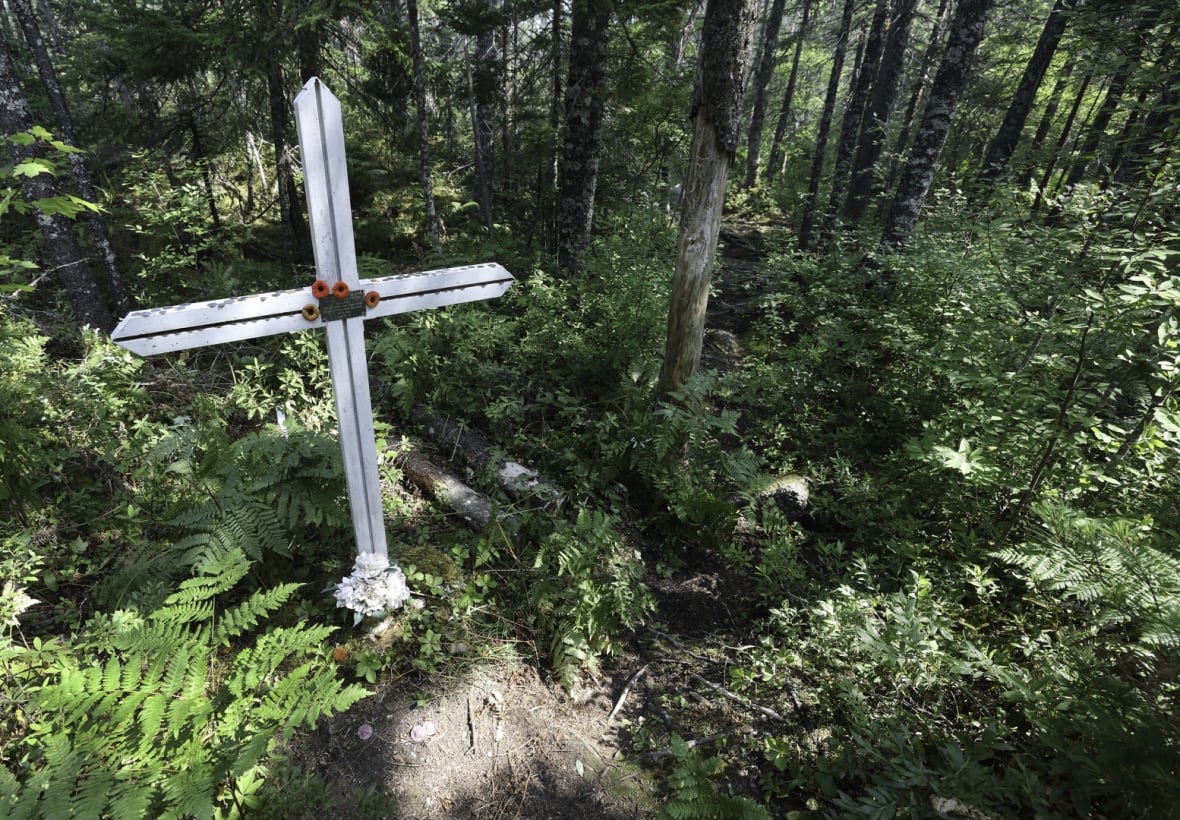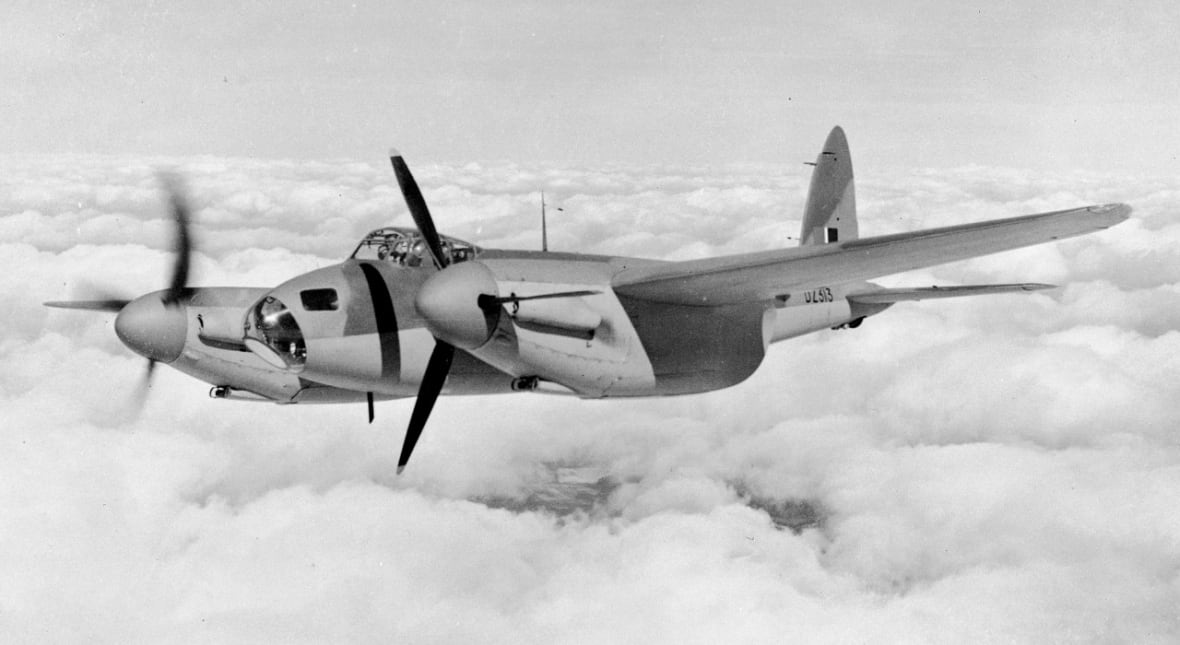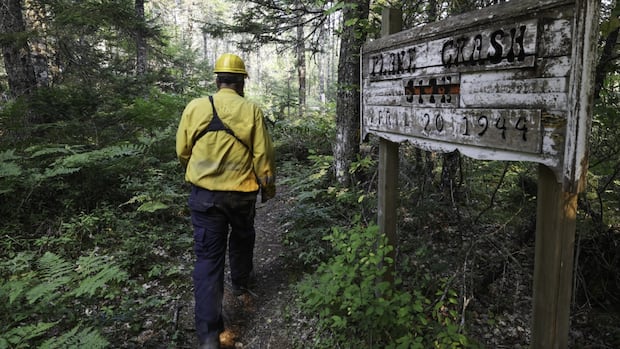Firefighters in West Dalhousie, N.S., have successfully saved a memorial to a fatal World War II plane crash from a nearby wildfire, preserving a tangible piece of Nova Scotia’s wartime history.
It was in the path of a wildfire that is threatening the area.
A memorial at the site honours two Royal Air Force airmen who died during a training exercise in 1944 while flying a de Havilland Mosquito B Mk XX, a Canadian-built variant of the bomber aircraft.
Speaking at a wildfire news briefing on Wednesday, Dave Steeves of the Department of Natural Resources said a division supervisor from the area knew about the significance of the site and did his best to ensure its safety.
Natural resources firefighter Cory Isenor removed a cross bearing a plaque inscribed with the names of the airmen from the site.
The aircraft took off from RCAF Greenwood on April 19, 1944, for a night training flight and crashed during the mission.
It went down about 19 kilometres south-southeast of Bridgetown, N.S., shortly after midnight on April 20.
Pilot Officer James Gerald Brown, 20, and Flying Officer Hugh Edward McCann, 21, were killed instantly.

Glen Gaudet of the Wartime Heritage Association, an organization dedicated to researching and memorializing First and Second World War casualties with ties to Nova Scotia, says the site has great historical significance.
“Some would probably say that it is just a piece of wreckage in the woods, but it is a reminder that during the Second World War, even far from the front lines of Europe and the Pacific, the cost of war was real and personal,” Gaudet said.
He said the memorial is one of the few physical traces of the British Commonwealth Air Training Plan’s presence in rural Nova Scotia.

Brown and McCann were in Nova Scotia under that plan, like so many who came from all over the world to complete air training, he said.
The Mosquito, nicknamed the Wooden Wonder because of the wood used in its construction, was a versatile combat aircraft.
The plane that crashed was part of an operational training unit based at Greenwood that prepared crews for front-line service.
The aircraft’s remains, primarily metal components given its wooden airframe, are still scattered across the area, known locally as the “Plane Crash Trail.”
Gaudet said the site’s remote location makes it a poignant landmark.
“It is one of the only crash sites that is actually marked, where people can stand and reflect on the very tangible impact the war had on Nova Scotia,” he said.
“It’s just a reminder that the Second World War came a lot closer in Nova Scotia than we think, and training accidents were fairly common.”
MORE TOP STORIES







